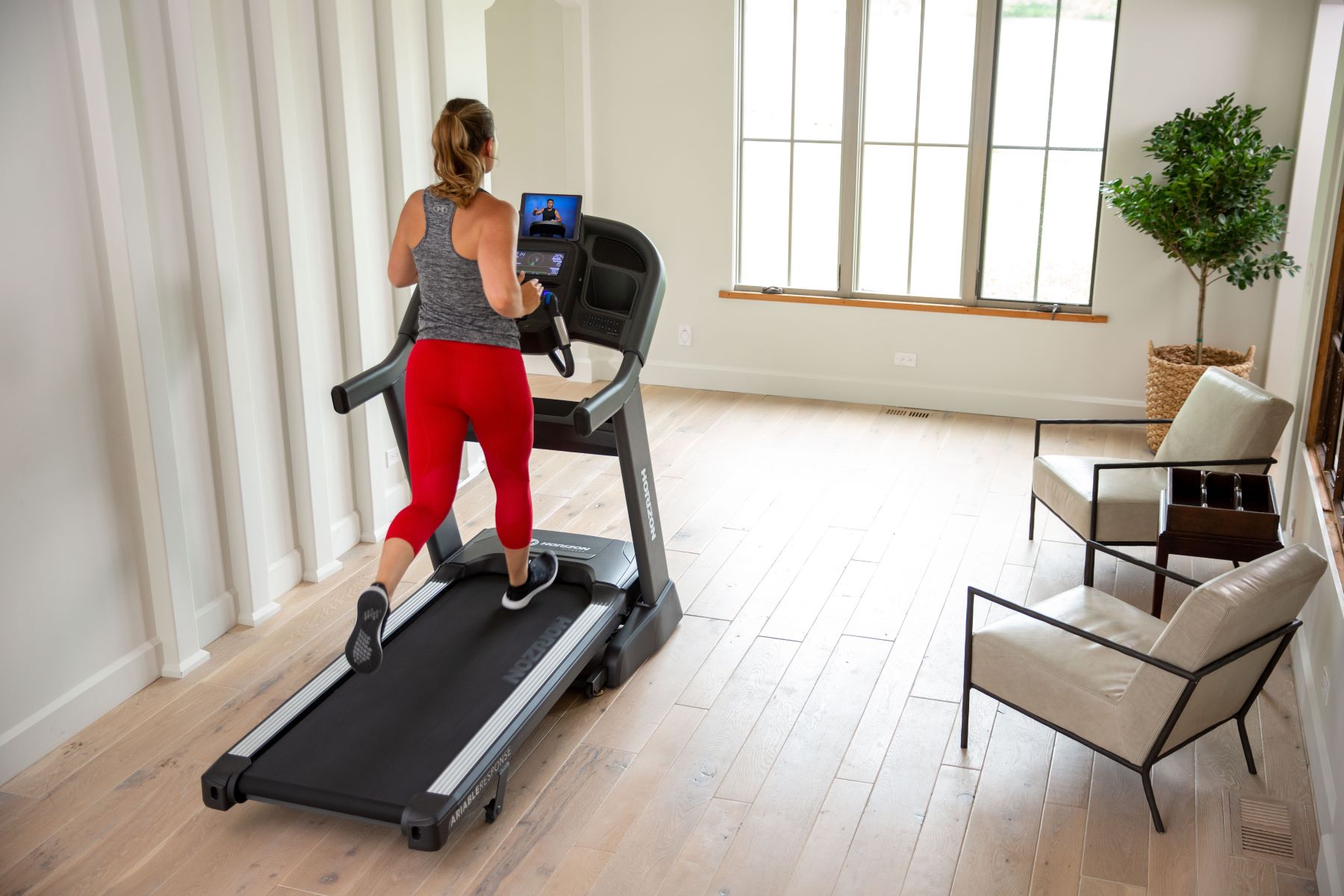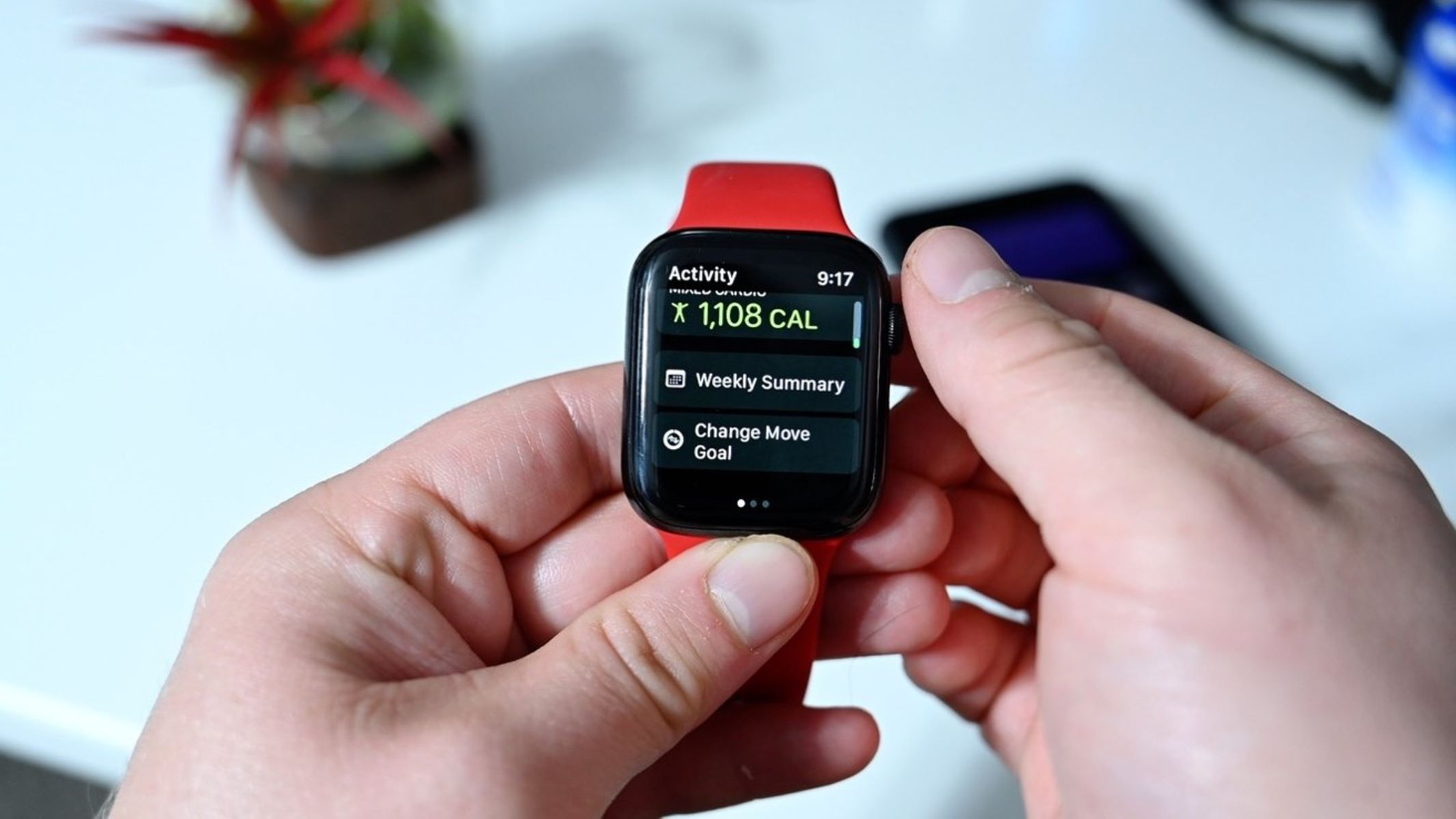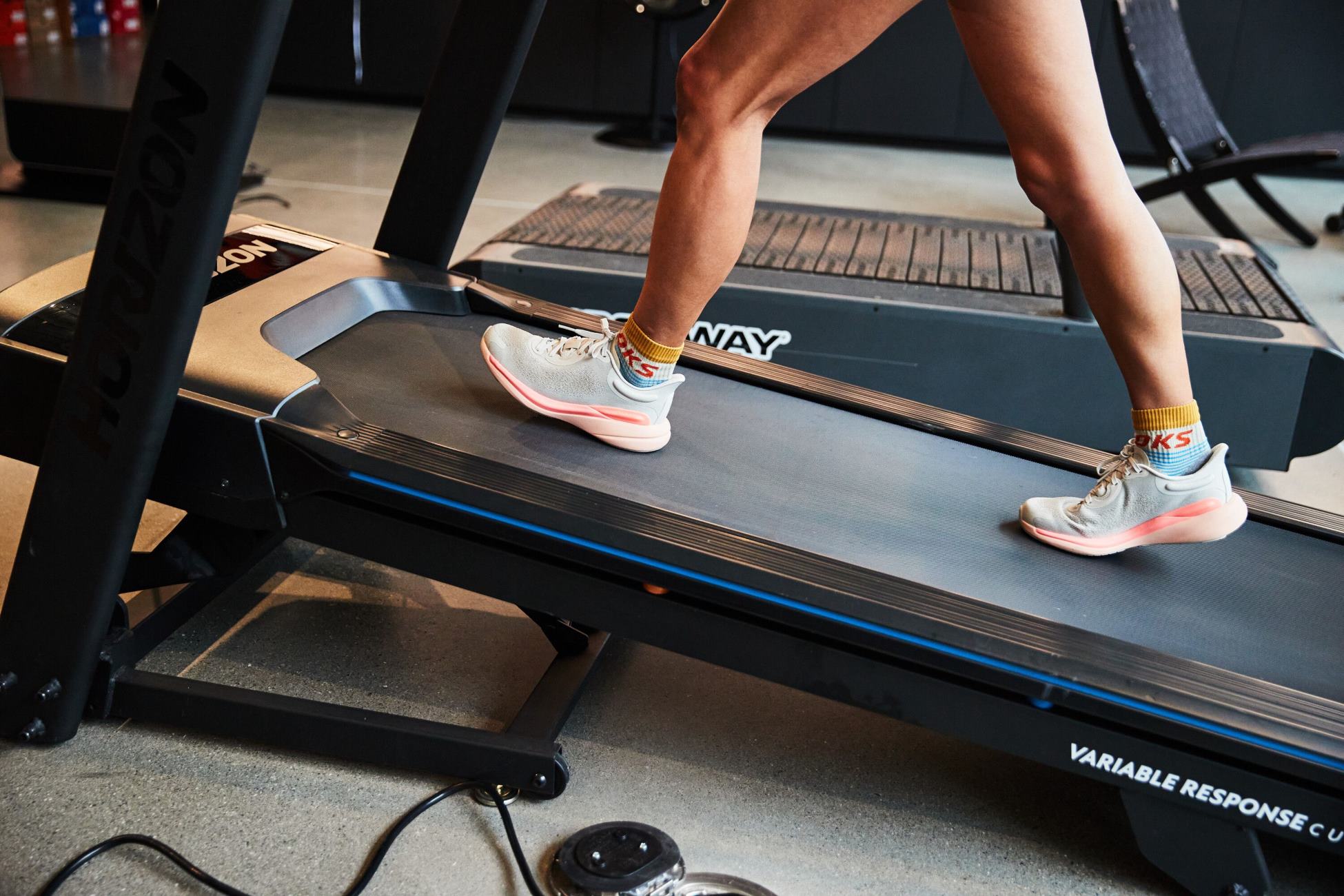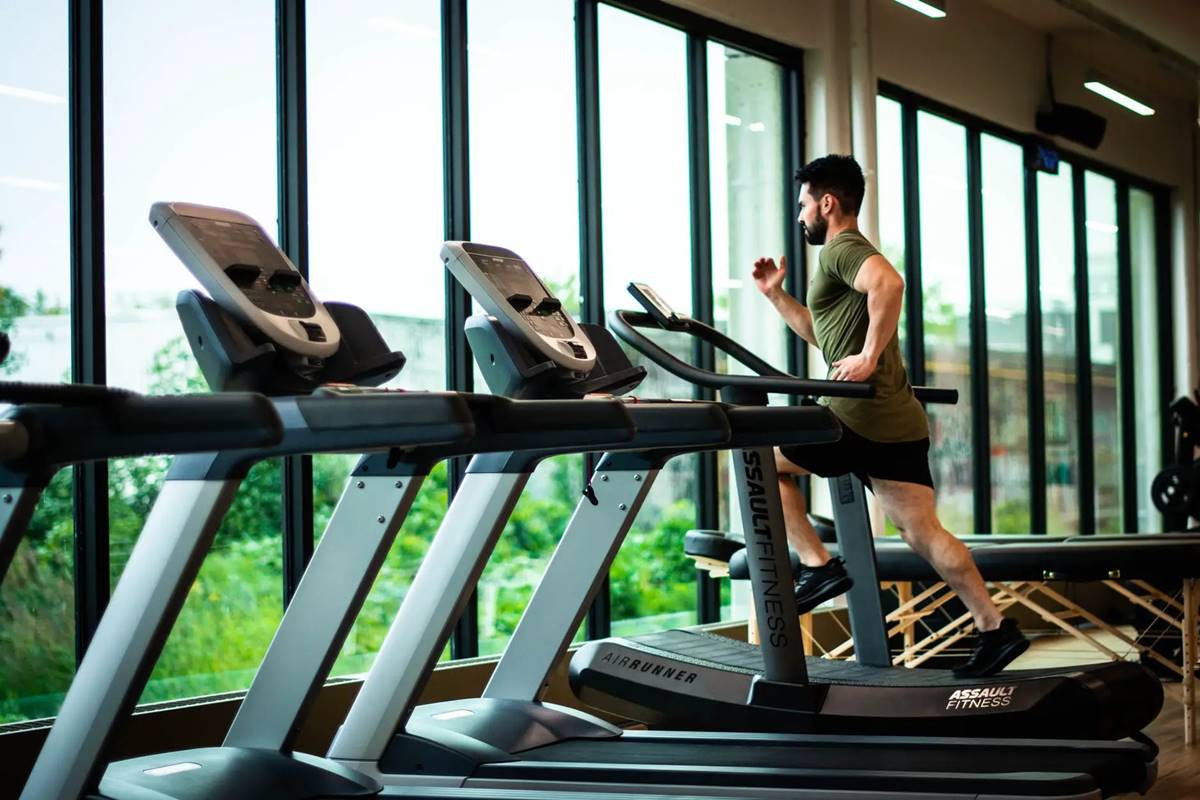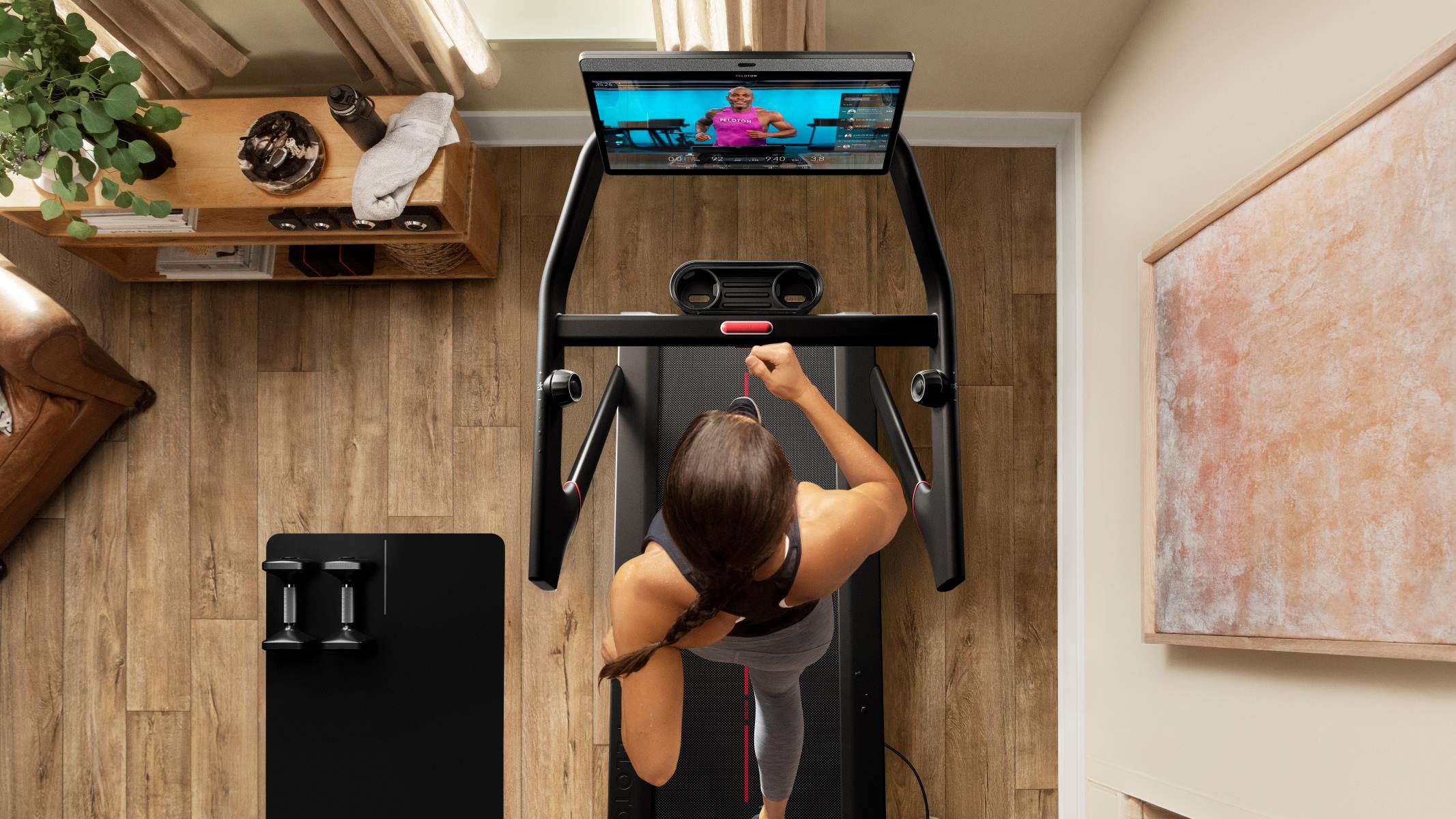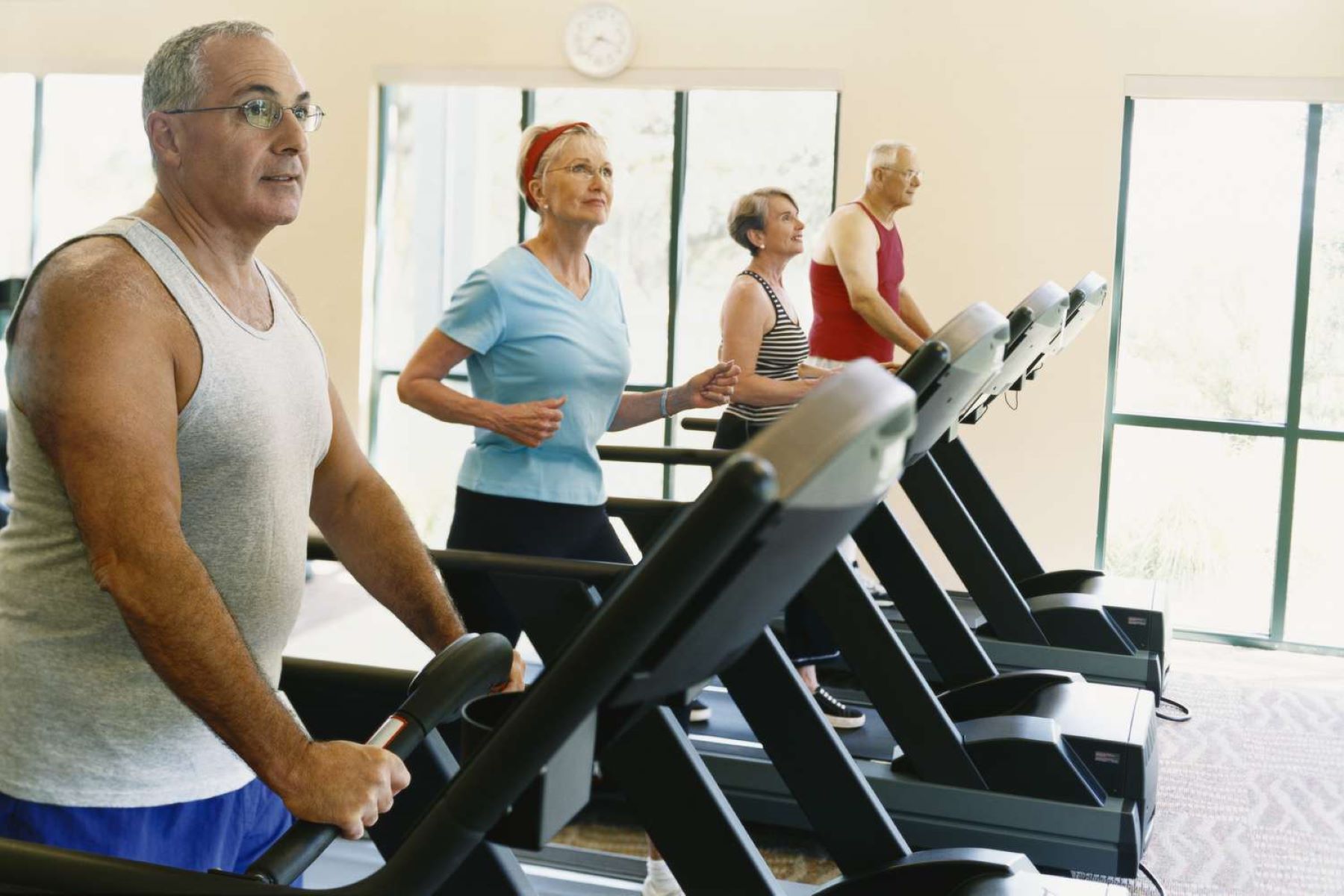

Featured
Why Do I Get Dizzy After Treadmill
Modified: January 2, 2024
Discover why you may feel dizzy after using a treadmill in this featured article. Explore potential causes and ways to prevent this sensation.
Introduction
Welcome to the world of fitness! Congratulations on taking the first step towards a healthier lifestyle by incorporating treadmill workouts into your routine. However, you may have noticed a peculiar sensation of dizziness after using the treadmill, and you’re not alone. Many individuals experience dizziness after a treadmill workout, and it can be a cause for concern.
Dizziness is a symptom characterized by a sensation of lightheadedness, unsteadiness, or a spinning feeling. It can occur during or after physical activity, including treadmill workouts. While occasional dizziness may not be a cause for alarm, persistent or severe dizziness should not be ignored as it could be a sign of an underlying issue that needs attention.
To address the concern of dizziness after treadmill workouts, it’s essential to understand the mechanics of exercise on a treadmill and the possible reasons why dizziness may occur. By identifying the causes, you can take appropriate measures to prevent or manage dizziness, allowing you to continue reaping the benefits of your treadmill workouts without any discomfort.
In this article, we will explore the factors that contribute to dizziness after treadmill use and provide practical tips to help prevent this sensation. Whether you’re a beginner or an experienced treadmill user, understanding why dizziness occurs and how to mitigate it will empower you to make the most out of your fitness journey.
Understanding Dizziness
Dizziness is a common sensation experienced by many individuals, and it can be attributed to various factors. It is crucial to understand the different types of dizziness and their potential causes to identify the root cause of post-treadmill dizziness.
One type of dizziness is called vertigo, characterized by a spinning or whirling sensation. It is often caused by disturbances in the inner ear, which is responsible for our sense of balance. Another type of dizziness is lightheadedness, characterized by a feeling of faintness or unsteadiness, often accompanied by a drop in blood pressure.
When it comes to treadmill workouts, several factors can contribute to dizziness. One possible cause is the changes in blood flow that occur during exercise. As you walk or run on the treadmill, your heart rate increases, and blood is directed towards the working muscles. This redistribution of blood flow can lead to a temporary decrease in blood supply to the brain, resulting in dizziness.
Another factor to consider is the impact of the vestibular system. The vestibular system, located in the inner ear, plays a crucial role in maintaining balance and spatial orientation. Any disruption or dysfunction in this system can lead to dizziness and a feeling of instability. Additionally, the rapid movements and changes in body position during treadmill workouts can further challenge the vestibular system, potentially causing dizziness.
Dehydration can also contribute to post-treadmill dizziness. When you exercise, you lose fluids through sweat, and if you don’t replenish them adequately, it can lead to dehydration. Dehydration affects blood volume and can result in low blood pressure, leading to dizziness.
Understanding the different types of dizziness and their potential causes can help you identify the specific factors contributing to post-treadmill dizziness. By pinpointing the underlying cause, you can take appropriate measures to address it and prevent or reduce dizziness during and after your treadmill workouts.
The Mechanics of Treadmill Exercise
Treadmill exercise involves repetitive movements of walking or running on a motorized belt. This form of exercise provides numerous cardiovascular and muscular benefits, making it a popular choice for individuals seeking an effective workout. Understanding the mechanics of treadmill exercise can shed light on why dizziness may occur during or after a workout.
When you walk or run on a treadmill, your muscles contract and relax, propelling you forward. The continuous movement challenges various muscle groups in your lower body, including your quadriceps, hamstrings, calves, and glutes. This repetitive motion elevates your heart rate, strengthening your cardiovascular system and improving overall endurance.
During treadmill exercise, your body undergoes multiple physical changes and adaptations. As your heart rate increases, so does your blood flow, delivering oxygen and nutrients to your working muscles. This increased blood flow also helps remove waste products, enhancing muscle recovery and efficiency.
Additionally, treadmill exercise engages your respiratory system, allowing you to take in more oxygen and expel carbon dioxide. This exchange of gases fuels your muscles and supports their performance throughout the workout. The cardiovascular and respiratory systems work together to sustain the demands of treadmill exercise, promoting improved fitness and overall health.
While the benefits of treadmill exercise are undeniable, it’s important to recognize the potential challenges it can present. The repetitive nature of treadmill workouts, combined with the impact of the moving surface, can put strain on your joints, particularly in the knees and hips. It’s crucial to maintain proper form, wear appropriate footwear, and listen to your body to avoid any injuries or discomfort.
The mechanics of treadmill exercise involve a harmonious coordination of various muscles and systems within your body. Understanding these mechanics can help you optimize your treadmill workouts and minimize the risk of dizziness or other discomforts. By learning how your body responds to treadmill exercise, you can make informed decisions about speed, incline, and duration, ensuring a safe and effective workout experience.
Common Causes of Dizziness
Dizziness can have various causes, and it’s essential to identify the underlying factors contributing to this sensation during or after treadmill workouts. By understanding the common causes of dizziness, you can take appropriate measures to prevent or address them and ensure a smooth and enjoyable exercise experience.
Physical Factors
The physical demands of treadmill exercise can sometimes lead to dizziness. Rapid changes in body position, especially when transitioning from walking to running or vice versa, can temporarily disrupt your sense of balance and make you feel lightheaded. The intense movements and vibrations of the treadmill can also challenge your body’s stability and equilibrium, potentially triggering dizziness.
Dehydration and Overexertion
Dehydration is a common cause of dizziness during exercise. When you sweat, your body loses fluids, and if you don’t replenish them adequately, it can lead to dehydration. Low fluid levels can disrupt your body’s usual functioning, including blood flow regulation and maintaining blood pressure levels, potentially causing dizziness. Overexertion, pushing yourself too hard during a treadmill workout, can also contribute to dizziness. It’s crucial to listen to your body and pace yourself accordingly to prevent excessive strain.
Vestibular System Dysfunction
The vestibular system, located in your inner ear, plays a crucial role in maintaining balance and spatial orientation. Any disruption or dysfunction in this system can lead to dizziness. Conditions such as benign paroxysmal positional vertigo (BPPV), labyrinthitis, or vestibular migraines can cause dizziness during or after exercise, including treadmill workouts. If you suspect an issue with your vestibular system, it’s advisable to consult a healthcare professional for proper evaluation and treatment.
Orthostatic Hypotension
Orthostatic hypotension, a sudden drop in blood pressure when you stand up, can also contribute to dizziness during or after treadmill workouts. This drop in blood pressure can occur due to various factors, including dehydration, certain medications, prolonged standing, or underlying medical conditions. If you experience frequent episodes of dizziness associated with changes in body position, it is recommended to consult with a healthcare professional to identify the underlying cause and manage your symptoms.
Medications and Medical Conditions
Certain medications, such as those used to treat high blood pressure, can affect blood pressure levels and potentially lead to dizziness during exercise. Additionally, underlying medical conditions such as heart disease, anemia, or neurological disorders can contribute to dizziness during treadmill workouts. It’s crucial to consult with your healthcare provider if you have any pre-existing medical conditions or are taking medications to ensure that exercise is safe for you.
By understanding these common causes of dizziness, you can take steps to prevent or manage dizziness during and after treadmill workouts. It’s important to listen to your body, stay hydrated, maintain proper form, and seek medical advice if dizziness persists or worsens.
Physical Factors
The physical demands of treadmill exercise can play a significant role in causing dizziness. Several physical factors can contribute to this sensation, including rapid changes in body position and the intense movements associated with treadmill workouts.
When transitioning from walking to running or switching speeds on the treadmill, you may experience a brief sense of lightheadedness. These rapid changes in body position can disrupt your sense of balance and make you feel dizzy. Your body needs time to adjust to new movement patterns, and during this transition, you may experience a temporary disconnect between your visual and vestibular systems, which can cause dizziness.
In addition, the vibrations and movements of the treadmill belt can also affect your body’s stability and equilibrium. The repetitive impact can stimulate your sensory receptors, particularly in the feet and legs, potentially leading to a sensation of dizziness or unsteadiness. This is especially true if you are not accustomed to the specific movements and vibrations associated with treadmill exercise.
Another physical factor that can contribute to dizziness is muscle fatigue. As you challenge your muscles during a treadmill workout, they may become fatigued over time. Fatigued muscles can affect your ability to maintain proper posture and balance, which can lead to feelings of dizziness or instability.
To minimize the impact of these physical factors, it’s crucial to pay attention to your form and technique while using the treadmill. Proper body alignment, including maintaining an upright posture, engaging your core, and keeping your gaze forward, can help promote better balance and stability. Gradually transitioning between different speeds or incline levels can also give your body time to adapt and reduce the likelihood of dizziness.
Additionally, it’s important to wear appropriate footwear that provides adequate support and cushioning. This can help absorb some of the impact and reduce the stress on your joints, potentially minimizing the risk of dizziness.
If you frequently experience dizziness during treadmill workouts, it may be helpful to consult with a certified fitness professional or physical therapist. They can assess your technique, provide guidance on proper form, and recommend exercises or stretches to strengthen specific muscles that may be contributing to your dizziness.
By being mindful of the physical factors that can contribute to dizziness on the treadmill and taking appropriate measures, you can enjoy a safer and more comfortable workout experience.
Dehydration and Overexertion
Dehydration and overexertion are common factors that can contribute to dizziness during treadmill workouts. Both can have a significant impact on your body’s ability to regulate blood flow and maintain proper functioning, often leading to feelings of lightheadedness or unsteadiness.
During exercise, especially on a treadmill, your body loses fluids through sweating. If you don’t adequately replenish these fluids, you can become dehydrated. Dehydration affects your blood volume, making it more challenging for your heart to pump blood efficiently throughout your body. As a result, your blood pressure can drop, leading to dizziness.
Additionally, dehydration can impair your body’s ability to regulate body temperature, which can further stress the cardiovascular system and contribute to dizziness. It’s important to drink enough fluids, preferably water, both before and during your treadmill workouts to prevent dehydration and its associated symptoms.
Overexertion, pushing yourself too hard during a treadmill workout, can also lead to dizziness. When you exert yourself beyond your body’s capabilities, it can cause excessive strain on your cardiovascular system. Your heart may struggle to keep up with the increased demand, resulting in inadequate blood flow to the brain and other vital organs. This reduced blood supply can manifest as dizziness or lightheadedness.
To prevent overexertion, it’s essential to listen to your body and pace yourself accordingly. Gradually increase the intensity or duration of your treadmill workouts over time, allowing your body to adapt to the demands of exercise. Taking regular breaks and incorporating rest days into your routine can also help prevent overexertion and reduce the risk of dizziness.
In addition to staying hydrated and avoiding overexertion, it’s important to ensure that you’re consuming a balanced diet to provide your body with the necessary nutrients and energy for exercise. Proper nutrition can help optimize your physical performance and support your body’s ability to maintain stability and prevent dizziness.
If you frequently experience dizziness during or after treadmill workouts despite staying hydrated and pacing yourself appropriately, it’s advisable to consult with a healthcare professional. They can evaluate your overall health, assess any underlying causes, and provide guidance on managing your symptoms to ensure a safe and enjoyable exercise experience.
Vestibular System Dysfunction
The vestibular system, located within the inner ear, plays a crucial role in maintaining balance and spatial orientation. Any disruption or dysfunction in this system can lead to dizziness, including during treadmill workouts. If you frequently experience dizziness during or after treadmill exercise, it’s important to consider the possibility of vestibular system dysfunction.
There are several conditions that can affect the vestibular system and contribute to dizziness. One common condition is benign paroxysmal positional vertigo (BPPV), where certain head positions or movements trigger episodes of dizziness. In BPPV, tiny calcium crystals within the inner ear become dislodged and cause abnormal signals to be sent to the brain, leading to feelings of vertigo.
Labyrinthitis is another condition that can affect the vestibular system. It is characterized by inflammation of the inner ear, often resulting from a viral infection. In addition to dizziness, individuals with labyrinthitis may experience hearing loss, ringing in the ears (tinnitus), and feelings of imbalance or unsteadiness.
Vestibular migraines are a type of migraine that specifically affects the vestibular system. These migraines can cause dizziness, vertigo, and disturbances in vision, often without the presence of a headache. Vestibular migraines can be triggered by certain foods, stress, hormonal changes, or other factors.
If you suspect that vestibular system dysfunction may be contributing to your dizziness during treadmill workouts, it’s advisable to seek medical evaluation. An audiologist or an ear, nose, and throat specialist (ENT) can perform tests to assess the function of your inner ear and help diagnose any underlying vestibular conditions.
Managing vestibular system dysfunction often involves a combination of medication and vestibular rehabilitation exercises. Medications may be prescribed to alleviate symptoms or prevent episodes of dizziness. Vestibular rehabilitation exercises aim to retrain the brain and improve balance and coordination. These exercises can be tailored specifically to address vestibular system dysfunctions and help alleviate symptoms during treadmill exercise.
It’s important to consult with a healthcare professional for a proper diagnosis and personalized treatment plan based on your specific symptoms and condition. They can guide you through appropriate exercises or refer you to a specialist who specializes in vestibular rehabilitation if necessary. With proper management, individuals with vestibular system dysfunction can often find relief from dizziness and continue to enjoy treadmill workouts and other physical activities.
Orthostatic Hypotension
Orthostatic hypotension refers to a sudden drop in blood pressure that occurs when you change your body position, such as standing up from a seated or lying position. This drop in blood pressure can lead to dizziness, lightheadedness, or even fainting, particularly during treadmill workouts.
There are several factors that can contribute to orthostatic hypotension during exercise. Dehydration is a common cause, as it can decrease blood volume and disrupt the body’s ability to regulate blood pressure. When you’re dehydrated, your blood vessels may not constrict properly, leading to a drop in blood pressure when you stand up.
Certain medications can also increase the risk of orthostatic hypotension. Medications used to treat high blood pressure, heart conditions, or nervous system disorders can affect blood pressure regulation, potentially leading to dizziness during exercise. If you’re taking medications, it’s important to discuss potential side effects with your healthcare provider and inquire about their impact on blood pressure.
Underlying medical conditions can also contribute to orthostatic hypotension. Conditions such as diabetes, Parkinson’s disease, or autonomic nervous system disorders can affect the body’s ability to regulate blood pressure, leading to dizziness or lightheadedness during treadmill workouts or other forms of exercise.
To prevent or minimize the risk of orthostatic hypotension during treadmill workouts, it’s important to stay well-hydrated. Drinking water before, during, and after exercise can help maintain blood volume and support proper blood pressure regulation. If you’re taking medications that may increase the risk of orthostatic hypotension, talk to your healthcare provider about strategies to manage your symptoms during exercise.
When transitioning from a seated or lying position to standing, it may be helpful to do so gradually. This can give your body time to adjust, reducing the likelihood of a sudden drop in blood pressure. Taking a few moments to stretch or move your legs before standing up can also help stimulate blood flow and minimize dizziness.
If you frequently experience dizziness or signs of orthostatic hypotension during treadmill workouts, it’s important to consult with a healthcare professional. They can assess your medical history, evaluate your blood pressure response to positional changes, and provide guidance on strategies to prevent or manage orthostatic hypotension during exercise.
By understanding the potential causes of orthostatic hypotension and taking appropriate measures, you can reduce the risk of dizziness and ensure a safe and comfortable workout experience on the treadmill.
Medications and Medical Conditions
Medications and certain medical conditions can contribute to dizziness during treadmill workouts. It’s important to be aware of the potential impact of these factors on your body’s response to exercise and take necessary precautions.
Medications used to treat various health conditions, such as high blood pressure, heart disease, or nervous system disorders, can affect blood pressure regulation and potentially lead to dizziness during exercise. Some medications may cause a drop in blood pressure, while others may alter the heart rate or affect the balance of fluids in the body. It’s important to consult with your healthcare provider or pharmacist about the potential side effects of any medications you are taking and their impact on exercise and dizziness.
Similarly, certain underlying medical conditions can contribute to dizziness during treadmill workouts. For example, individuals with heart disease may experience dizziness due to insufficient blood circulation to the brain during exercise. Anemia, a condition characterized by low levels of red blood cells or hemoglobin, can also affect oxygen delivery to the brain and lead to feelings of lightheadedness during physical activity.
Neurological conditions, such as Parkinson’s disease or multiple sclerosis, can also contribute to dizziness or unsteadiness during treadmill exercise. These conditions can impact the coordination and functioning of the nervous system, including the control of balance and spatial awareness.
If you have any pre-existing medical conditions or are taking medications, it’s important to discuss your exercise plans with your healthcare provider. They can evaluate your specific situation, provide guidance on any necessary precautions or modifications, and help determine if any further diagnostic tests or adjustments to your medication regimen are needed.
In some cases, a healthcare provider might recommend performing a stress test to assess your cardiovascular function during exercise. This test helps evaluate your heart’s response to physical exertion and can provide valuable information about any exercise-induced dizziness or other symptoms you may experience.
By working closely with your healthcare provider, you can ensure that your exercise routine on the treadmill is safe and appropriate for your specific medical condition and medication regimen. They can help you establish guidelines for exercise intensity, duration, and frequency, as well as monitor your progress over time.
Remember, it’s crucial to listen to your body and stop any exercise that causes severe or persistent dizziness. If you experience sudden or severe dizziness, chest pain, or shortness of breath during exercise, seek immediate medical attention.
By being aware of the potential impact of medications and medical conditions on dizziness during treadmill workouts, you can take appropriate measures to ensure a safe and comfortable exercise experience.
Tips to Prevent Dizziness on the Treadmill
Dizziness during or after treadmill workouts can be distressing and may deter you from achieving your fitness goals. Fortunately, there are several strategies you can implement to help prevent or minimize dizziness on the treadmill. Here are some useful tips to consider:
- Stay hydrated: Drink water before, during, and after your treadmill workout to maintain adequate hydration levels. Dehydration can lead to a drop in blood volume, affecting blood pressure and potentially causing dizziness.
- Pace yourself: Gradually increase the intensity and duration of your treadmill workouts over time. Pushing yourself too hard, too quickly can lead to overexertion and dizziness. Listen to your body and take breaks whenever necessary.
- Maintain proper form: Focus on maintaining good posture while using the treadmill. Stand upright with your shoulders relaxed and gaze forward. Engage your core muscles to support your body and promote better balance and stability.
- Gradual transitions: When changing speed or incline on the treadmill, make the transitions gradual rather than sudden. This allows your body to adjust to the changing demands and reduces the likelihood of dizziness.
- Wear appropriate footwear: Choose footwear that provides adequate support and cushioning for your feet and ankles. This can help absorb some of the impact and reduce the stress on your joints, potentially minimizing the risk of dizziness.
- Breathe properly: Focus on maintaining steady and controlled breathing throughout your treadmill workout. Shallow or irregular breathing can reduce oxygen supply to your brain and contribute to dizziness.
- Consider medication timing: If you take medications that may affect your blood pressure or dizziness, discuss the timing of your medication doses with your healthcare provider. Adjusting the timing of medication intake can help minimize the risk of dizziness during exercise.
- Address underlying conditions: If you have underlying medical conditions that contribute to dizziness, work with your healthcare provider to manage those conditions effectively. This may involve appropriate medication adjustments or additional treatment strategies tailored to your specific situation.
- Consult with a professional: If dizziness persists or worsens despite implementing these tips, consider seeking guidance from a certified fitness professional or a physical therapist. They can evaluate your technique, provide personalized exercises or stretches, and further assist in preventing dizziness during your treadmill workouts.
Remember, everyone’s body is unique, and what works for one person may not work for another. It may take some trial and error to find the strategies that work best for you. It’s important to prioritize your safety and well-being during exercise, so if dizziness persists or becomes severe, it’s advisable to consult with a healthcare professional for a thorough evaluation.
By implementing these tips and listening to your body, you can minimize the risk of dizziness and enjoy a comfortable and rewarding treadmill workout experience.
Conclusion
Experiencing dizziness after using a treadmill can be concerning, but understanding the potential causes and implementing preventative measures can help alleviate this sensation. Dizziness during or after treadmill workouts can be attributed to various factors, including physical factors, dehydration, vestibular system dysfunction, orthostatic hypotension, medications, and underlying medical conditions.
To prevent or minimize dizziness on the treadmill, it is important to stay hydrated, listen to your body, maintain proper form, pace yourself, and wear appropriate footwear. Gradually transitioning between speeds, as well as implementing controlled breathing techniques, can also help reduce the risk of dizziness. Additionally, if you take medications or have underlying medical conditions, consulting with your healthcare provider to manage your symptoms during exercise is essential.
By implementing these preventative measures and seeking guidance from healthcare professionals when needed, you can enjoy a safe and comfortable treadmill workout experience. Remember, it’s important to prioritize your well-being and listen to your body. If dizziness persists or worsens despite implementing these strategies, it’s advisable to consult with a healthcare professional for a thorough evaluation and further guidance.
Don’t let dizziness deter you from reaping the benefits of your treadmill workouts. With awareness, proper precautions, and a personalized approach to your exercise routine, you can continue on your fitness journey with confidence and have a fulfilling and successful experience on the treadmill.

